What equipment do you need for stargazing in a city?
Live in the city but love a dark sky? We have some tricks to help you enhance it's beauty despite the artificial light.

When it comes to urban stargazing, we are at the mercy of light pollution — a side-effect of our collective dependency on artificial lighting. In centuries gone by, even heavily populated cities were considerably darker at night than today. Victorian Londoners would stand outside and admire the Milky Way from Trafalgar Square — today an almost unimaginable experience that will likely never occur again except during a catastrophic power cut.
Technology has no doubt improved urban nightlife, making outdoor spaces safer and more accessible after dark, but it’s a double-edged sword. These same advances have eroded the beauty of the sky. Technology, though, exists to solve problems – even the ones it creates. So, could dedicated astronomy technology mitigate the effects of light pollution and help us reclaim the night? It turns out that off-the-shelf equipment can help you get the best out of the bright city sky. Here’s what you need to know.
Bringing back the contrast
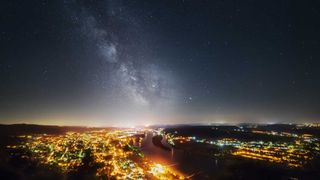
As the cumulative glow of our outdoor lighting is reflected off the atmosphere, the sky acts like a dull mirror to the ground. As a result, the apparent contrast of celestial objects is reduced, lowering their visibility to our eyes. So, can you see stars in light-polluted skies? We need to use equipment that will help us recover this perceived contrast to make the stars and other objects stand out against the excessively bright background. Fortunately, there are two approaches to increasing contrast that, particularly in combination, can yield surprisingly impressive results.
Binoculars & Telescopes
Let’s give our eyes a technological boost. Binoculars and telescopes work by collecting a large amount of light and forming an image. This is then magnified and focused into a cone that fits into the eye’s pupil. The light-gathering power of a lens or mirror, even a small one, is generally many times greater than that of the unaided eye.
This means faint objects that are well below the eye sensitivity can be seen. Unfortunately, these instruments can’t tell the difference between starlight and light pollution. They simply gather all the visible light in the field of view, but our experience can lead us to know otherwise, and that’s all that matters.
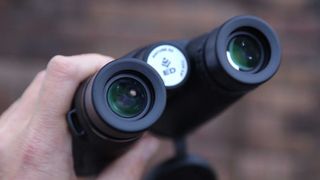
Some have claimed that magnifying an image of the sky using binoculars or a telescope increases its contrast, but this is not true and results from a misunderstanding of optical theory. The contrast of an image remains unchanged no matter the magnification since both the stars and the surrounding sky are altered by the same factor.
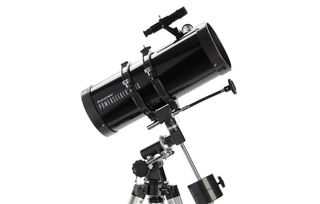
We recommend the Celestron PowerSeeker 127 EQ in our guide to the best telescopes for its intermediate-level features and excellent value for money.
However, the perceived contrast is improved. When looking at the night sky with some magnification, the background does seem to darken relative to the objects of interest, making them appear more striking. Why is this? There are a couple of mechanisms at play.
Firstly, to magnify an image, its light must be spread out over a larger area. Binoculars and telescopes collect lots of incoming light, but only a portion of it is used by the eyepiece assembly before it enters your eye. That small sample from the center of the image is blown up, spreading its light and darkening the final image. Light pollution then, is spread out over a larger area, lowering its density.
Stars, meanwhile, appear so infinitesimally small no matter how much we zoom in, that they are always seen as point sources. Their light is spread out too, but the effect is unnoticeable to the eye and so we perceive more contrast. As such, we see many more and much fainter stars, just as we would under ideal skies.
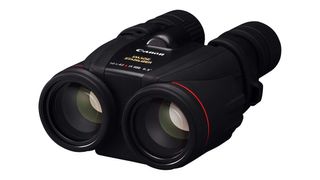
We think the Canon 10x42L IS WP is the best binocular for stargazing that money can buy and why it sits in the number one spot in our guide to the best binoculars.
Secondly, when contrast is very low, for example when looking at a diffuse object like a nebula or galaxy, the apparent size of the object plays an important role in how we see differences in brightness. Since binoculars and telescopes make these objects look larger to us, they are more likely to meet the sensitivity threshold for low contrast as determined by our eyes.
This means that both stars and deep-sky objects stand out more when using binoculars and telescopes, and as such these tools drastically improve our experience of the urban night sky. Indeed the effect often surprises people, because the gap between naked-eye views of stars in cities and the countryside is very wide. But with optical aid, this gap becomes narrower.
Filters
Filters allow us to genuinely improve the contrast of images formed in our telescopes eyepiece, by rejecting the light we don’t want to see and transmitting the light we do. These small, cost-effective components are screwed into the eyepiece barrel, filtering the incoming light before it enters the eyepiece. Two kinds of filters target light pollution.
Light Pollution Reduction Filters
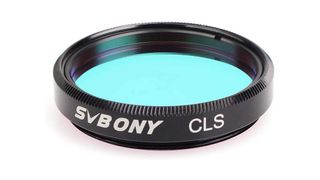
Light Pollution Reduction (LPR) filters are broadband filters, which gently attenuate the light passing through them, to remove wavelengths or colors generally associated with light pollution. They work on the principle that most outdoor lighting relies upon low-pressure sodium vapor lamps, which give off a rather warm yellowish hue.
LPR filters reject the colors emitted by these lamps, allowing the rest of the visible spectrum to pass through. Light pollution is largely composed of reflected sodium vapor emissions, so LPR filters selectively reduce its impact on the images contrast. Of course, these filters are cutting some of the star light too, but ultimately most of it is still allowed to pass through and very little artificial light is transmitted. Naturally, this does alter the color balance of the image, making it appear more blueish, but that’s a small price to pay for a notable increase in contrast.
Ultra-High Contrast Filters
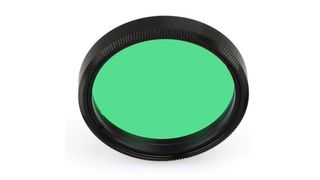
Ultra High Contrast (UHC) filters, true to their name, drastically increase contrast, but there is a caveat. These are narrowband filters, rejecting most of the light coming through the telescope. They’re designed to transmit only certain, narrow wavelengths of light, which are associated with the emissions of gasses like Hydrogen and Oxygen – prominent gasses in nebulae, which are excited by the energy of nearby stars, causing them to glow.
UHC filters are essentially nebula filters, designed to widen the gap in brightness between nebulae and the sky. On paper, they seem too good to be true, but they’re not generally suitable for viewing the sky by eye. Rather, they’re targeted toward astrophotographers looking to improve their deep-sky shots. Experienced telescope users sometimes employ these filters for visual work, but it’s best to start with a general-purpose LPR filter.
It’s important to note that these filters work only by reducing the total light passing through the telescope assembly. This will always result in darker overall images. We are sacrificing some brightness to regain contrast. In general, such filters are usually not suitable for very small telescopes and perform much better with larger ones. The UHC filters demand large apertures for good results. They are sold in two sizes: 1.25-inch and 2-inch, to match the industry-standard eyepiece barrel diameters. Make sure you double-check which ones you need.
- Discover the brightest planets in June's night sky
- Find the best telescope deals
Conclusion
So, if you’re looking to boost your urban astronomy, let technology be your companion. Gather more light, spread it out and throw away what you don’t need until the natural wonders of the night sky shine through.
Editor's Note: If you snap an amazing urban stargazing photo and would like to share it with Space.com's readers, send your photo(s), comments, and your name and location to spacephotos@space.com.
Follow us on Twitter @Spacedotcom and on Facebook.
Join our Space Forums to keep talking space on the latest missions, night sky and more! And if you have a news tip, correction or comment, let us know at: community@space.com.
Get the Space.com Newsletter
Breaking space news, the latest updates on rocket launches, skywatching events and more!

Tom Kerss is an astronomer and the author of numerous best-selling books about the night sky for both adults and children, including Northern Lights, Diamonds Everywhere and the Starry Stories Series. He shares his passion for the stars with people all over the world, delivering courses, podcasts and media interviews. Having worked in Hawaii, Chile, Namibia, Iceland and Norway, Tom loves nothing more than to seek out the darkest and most beautiful skies on Earth, escaping his light-polluted home of London. He has a background in astrophysics and formerly worked at the Royal Observatory in Greenwich.
- Tantse WalterContributing Writer
